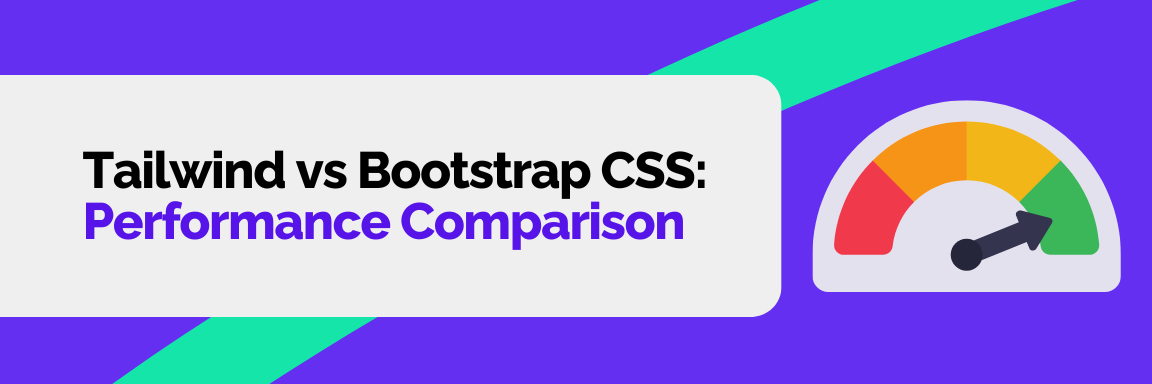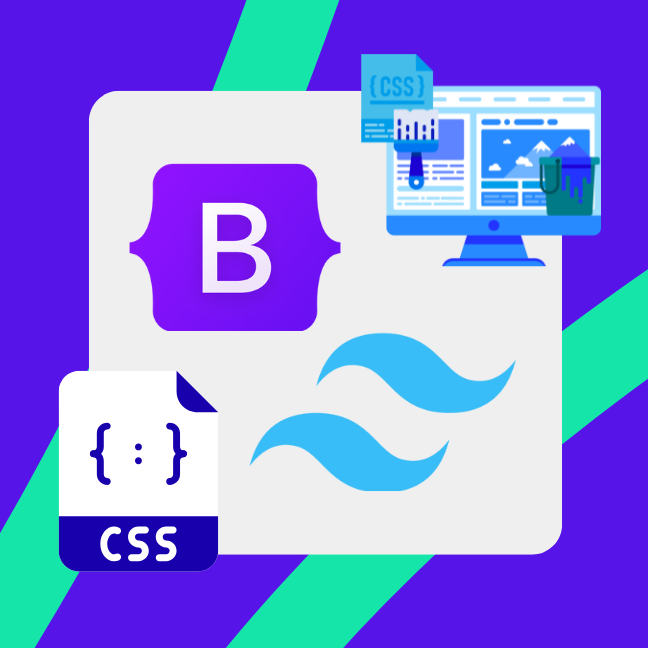UI and UX, zBlog
Tailwind vs Bootstrap CSS: Performance, Flexibility, and Best Practices Compared
trantorindia | Updated: September 8, 2025

In the landscape of modern web development, CSS frameworks play a pivotal role in streamlining design processes and ensuring responsive, consistent user interfaces. Two of the top contenders dominating this space today are Tailwind CSS and Bootstrap CSS. With evolving web standards and design preferences, the debate around Tailwind vs Bootstrap CSS centers on performance, flexibility, maintainability, and developer experience.
This comprehensive guide dives deep into a side-by-side comparison of Tailwind and Bootstrap CSS, evaluating their core philosophies, performance metrics, customization capabilities, learning curves, ecosystem, and best practices for optimal use. Additionally, we explore current trends, real-world case studies, user surveys, and help you decide which framework suits your project needs best in 2026.
What Is Tailwind CSS?

Tailwind CSS is a utility-first CSS framework that provides low-level, atomic CSS classes directly in your HTML markup. Instead of defining bulk styles in external stylesheets, Tailwind encourages developers to compose designs by applying pre-built utility classes to elements, allowing rapid and highly customizable UI building.
Key Features of Tailwind CSS:
- Utility-First Approach: Hundreds of single-purpose classes for margins, padding, colors, typography, shadows, and much more.
- Highly Customizable: Configuration file allows custom themes, colors, breakpoints, and responsive variants.
- No Pre-designed Components: Developers build unique layouts by combining utilities.
- Responsive and Variant Support: Utilities adapt natively to hover, focus, dark mode, and screen sizes.
- Purging Unused CSS: Generates minimal CSS by removing unused classes during production builds, ensuring small bundle sizes.
- Integration with Modern Build Tools: Works seamlessly with PostCSS, Webpack, Vite, and frameworks like React, Vue, and Angular.
What Is Bootstrap CSS?

Bootstrap is a component-based CSS framework offering pre-designed UI components, grid system, and utilities designed to facilitate responsive front-end development. Originally developed by Twitter, Bootstrap remains a widespread, battle-tested framework that enables developers to build consistent, mobile-first websites efficiently.
Key Features of Bootstrap CSS:
- Pre-built Components: Buttons, modals, dropdowns, carousels, forms, and navbars readily available.
- Grid System: Robust, responsive 12-column grid layout system.
- Utility Classes: Extensive set for spacing, flex, text alignment, and more.
- JavaScript Plugins: Ready-to-use components with interactivity, powered by JS modules.
- Customizable via Sass: Themes and variables can be customized for branding.
- Broad Browser Support: Works across all modern browsers and older versions.
- Large Ecosystem: Extensive plugins, themes, and community support.
Tailwind vs Bootstrap CSS: Performance Comparison

Bundle Size & Load Times
- Tailwind CSS uses purge techniques aggressively pruning CSS not used in markup, often resulting in significantly smaller CSS bundles (as low as 10-20 KB for production builds).
- Bootstrap includes all core styles and component classes, often leading to larger bundle sizes (~150 KB minified by default), even if certain components are unused unless custom builds are created.
Render Efficiency
- Tailwind promotes minimal add-ons and inline utility classes, which keep CSS specificity low and simplify rendering.
- Bootstrap’s component syntax sometimes requires overriding styles that can increase CSS specificity and render complexity.
Impact on Page Speed
Studies show Tailwind CSS-enabled pages often outperform Bootstrap counterparts regarding FCP (First Contentful Paint) and TTI (Time to Interactive), mainly due to lean CSS payloads and reduced repaint/reflow.
Flexibility and Customization

Tailwind CSS Flexibility
- Provides granular design control without writing custom CSS.
- Developers tailor designs by composing utilities—adapting designs rapidly without deep CSS mastery.
- Themes and variants configure responsive behavior, states, and dark mode elegantly.
- Encourages unique designs, preventing “cookie-cutter” look-alike web pages.
Bootstrap Customizability
- Pre-designed components accelerate MVP builds with polished, tested UI elements.
- Sass variables allow modified color schemes, spacing, and typos but less granular than Tailwind.
- Adding custom designs often requires overriding Bootstrap’s CSS which can become cumbersome.
- Consistent UI feel; preferred when standardization and quick deployment trump uniqueness.
Developer Experience
Tailwind CSS Developer Experience
- Steep learning slope initially due to vast utility class vocabulary.
- Rapid prototyping once fluent; no context switching to CSS files saves time.
- IDE support and plugins enhance class name suggestions and error checking.
- Easily integrates with modern JS frameworks and JSX/TSX syntax.
Bootstrap Developer Experience
- Easier onboarding for beginners: intuitive HTML components.
- Less verbose markup, fewer classes to memorize.
- Extensive documentation and large community support.
- Ideal for teams relying on traditional CSS/JS separation and component reuse.
Maintainability and Scalability

- Tailwind CSS promotes inline utility classes increasing HTML verbosity but reducing CSS file proliferation. This can impact readability but improves maintainability in teams versed in utility-first design.
- Bootstrap encourages component and stylesheet reuse but can bloat CSS if many overrides are applied. Larger monolithic CSS files pose caching challenges in scaled apps.
Ecosystem and Community Support
Bootstrap boasts a mature ecosystem with thousands of themes, plugins, and tutorials. It’s deeply integrated in CMS platforms, popular for rapid non-developer-friendly UI construction.
Tailwind’s ecosystem is rapidly growing with component libraries like Headless UI, Tailwind UI, and integration tools for design systems. Its community emphasizes modern front-end development patterns and full control.
Real-World Usage & Survey Insights
- According to a 2025 Stack Overflow Developer Survey, 25% of front-end developers preferred Tailwind CSS for new projects, citing design flexibility and performance.
- Bootstrap remains favored by 35% of respondents, especially in enterprise and legacy projects demanding component-rich UI.
- Case studies show Tailwind CSS users improve CSS bundle size by up to 75% compared to Bootstrap-based sites.
- Organizations embracing Tailwind report a 30% boost in development speed due to reduced context switching and streamlined styling logic.
Tailwind vs Bootstrap CSS: When to Use Which?

Use Tailwind If:
- You require pixel-perfect, custom designs that deviate from standard templates.
- Performance and minimal CSS overhead are critical.
- Your team has strong front-end skills and familiarity with utility-first concepts.
- You want to build component-based design systems with granular control.
- You use React, Vue, or modern JavaScript frameworks intensively.
Use Bootstrap If:
- Time to market and rapid prototyping of standard, consistent UI is paramount.
- You need a comprehensive component library out of the box.
- Your team prefers working with classic CSS and JS separation.
- Project scope favors convention over customization.
- You maintain legacy or large-scale enterprise apps needing tried-and-tested UI components.
Best Practices for Tailwind and Bootstrap Usage

Tailwind CSS Best Practices
- Configure purging aggressively to ensure small CSS bundles.
- Leverage Tailwind’s configuration for consistent theming.
- Use component extraction (@apply directives or JSX components) to manage HTML verbosity.
- Employ plugins for typography, forms, and accessibility.
- Integrate with PostCSS and build tools like Webpack or Vite.
Bootstrap CSS Best Practices
- Customize Sass variables rather than overriding CSS where possible.
- Use only required components via custom builds to avoid loading the entire framework.
- Implement component-based structures leveraging Bootstrap’s grid system.
- Combine with JavaScript frameworks carefully to avoid conflicts.
- Regularly update to leverage security patches and feature improvements.
Frequently Asked Questions (FAQs)
Q1: Is Tailwind CSS faster than Bootstrap?
Generally, yes. Tailwind’s utility-first approach enables smaller CSS bundle sizes, improving loading times.
Q2: Can Tailwind and Bootstrap be used together?
Technically possible but not recommended due to overlapping styles and increased CSS size.
Q3: Which framework is better for beginners?
Bootstrap tends to be easier for beginners because of ready-made UI components.
Q4: Does Tailwind CSS support responsive design?
Yes, Tailwind has robust responsive utilities built-in with breakpoint support.
Q5: Are there enterprise use cases for Tailwind?
Absolutely. Tailwind is gaining traction in large enterprises desiring more design flexibility and performance.
Conclusion: Choose the Right Framework with Trantor
Choosing between Tailwind vs Bootstrap CSS requires understanding your project’s performance needs, design flexibility, team skill sets, and long-term maintenance plans. Tailwind shines for modern, highly customized, performance-critical projects using advanced tooling, while Bootstrap remains the dependable choice for rapid development and consistent, component-rich interfaces.
At Trantor, we help businesses select, customize, and implement the best CSS frameworks tailored for their digital products. Our experts ensure your front-end is scalable, maintainable, and performant—delivering exceptional user experiences fast.




